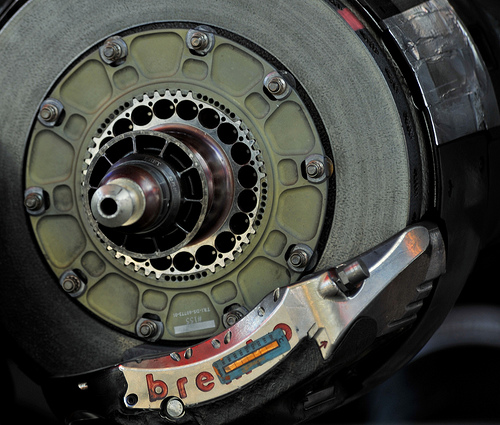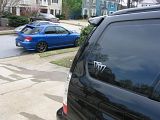What was wrong with the old ones? ...or did you just buy the new ones for the cool factor of the c/d look?
The reason I ask is because if the old rotors were good (ie. no pulsating pedal upon braking), then they are still true. You can just slap them back on, and with the new pads you'll be back in business and without the shake or any further expenses.
If the new rotors are warped already, there's a slight chance they were slightly off when you got them, in which case it might be worth the try to get them turned. The only thing you have to keep in mind is that every time you get a rotor turned, you're making the material thinner which means it will heat up faster and be more prone to warpage down the road.
As for the argument of cross drilled, slotted, both, or blanks, I've had lengthy conversations with Brembo, Baer, and some very willing and knowledgeable guys over at Willwood, and they were pretty much in complete agreement with these facts:
Cross drilled: This practice was used in racing applications to reduce weight of the rotating masses. It was also done promote better heat dissipation on the old steel rotors with the older (less high-tech) compounds that pads use to be made of. Finally, it was also believed to allow off-gassing of the pads to escape from the contact surface faster instead of acting as a lubrication between the rotor and pad surfaces which would make the braking less effective.
There are disadvantages to consider as well. Cross-drilled rotors are significantly weaker than a 'blank' or solid rotor of the identical material. This has proven itself time and again to cause a pre-mature cracking of the rotor which deems it useless.
Sounds like all positives with not too many negatives right? Well, yes, but things have come a long way since then.
Slotting: These slots cut into rotors will allow the off-gasses to escape, and the slotting can (somehow, but I don't completely understand it) pull the the pad back to the surface of the rotor and promote its 'bite' under heavy braking. Because the rotor surface is only gouged and not drilled through, they are structurally much stronger than the cross-drilled rotors. But because the surface is slightly compromised, they will cause the rotor to wear or warp faster, and because they're making your braking more effective, they will wear the pads a bit faster than a blank as well.
Dimpled: This gives the 'cool' look of cross-drilling without the negative side effects of cracking. However, the dimpling has proven not to do much of anything with regards to anything performance oriented. They just look pretty cool. But again, you're compromising the surface of the rotor, so it too will warp and/or wear faster than a blank.
Blank: While this is far more boring, and less aestetically pleasing than a cross-drilled, or slotted rotor, it does withstand more daily driving punishment than really any other rotor treatment. These will be the least likely to warp. While they will probably not dissipate off-gassing of rotor-to-pad quite as well as the slotted, they will do a damn good job of stopping you on command.
At this point, the materials used in rotor and pads are far superior to what they were when the cross-drilling was the thing to do. The newer rotors are stronger, lighter, and the pads are much less prone to heat exhaustion and can deliver great bite even under abuse. (Now that's providing you pay up for good pads as compared to the economy crap pads/rotors available for dirt cheap.) With nearly all cars (and certainly an even greater percentage of race-applications) the rotors are now 'vented' which means two rotor surfaces with a cavity (vents) between the two surfaces. This hugely helps with heat dissipation and cooling, and in turn greatly extends their life.
So at the end of the day, many cross-drilled rotors may look good, but it's really an older technology that doesn't really have a practical application in race purposes. The slotted would be the way I'd go if I'm racing the car, bearing in mind that my rotors/pads will not last as long, but might be a teensie-tiny bit more effective than blanks.
All that said, I currently have Brembo factory cross-drilled rotors both front and back, and Axxis Metal Master Ceramic pads front and back. I did drive it very hard when I was driving it regularly, and never cracked or warped a rotor. And as for the pads, I'm pretty much sold on using these for the foreseeable future. They actually bite more as they warm up.

Anyway, sorry for the rambling, but hope it helps. If not, please disregard.










 Reply With Quote
Reply With Quote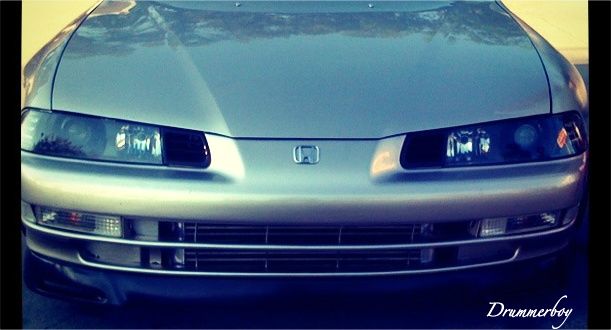


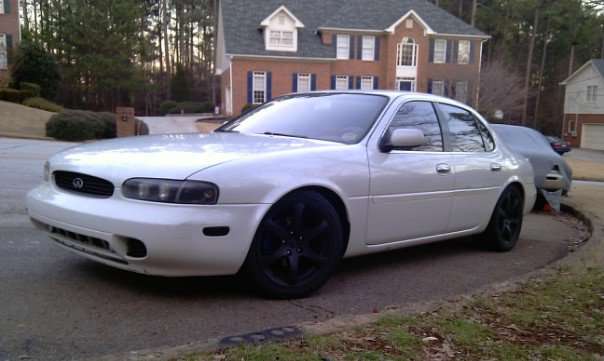



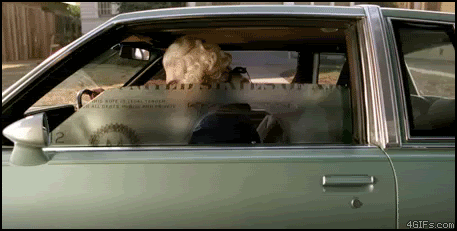


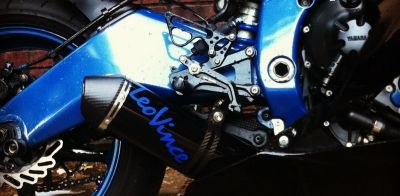







 <<<BOOST
<<<BOOST

